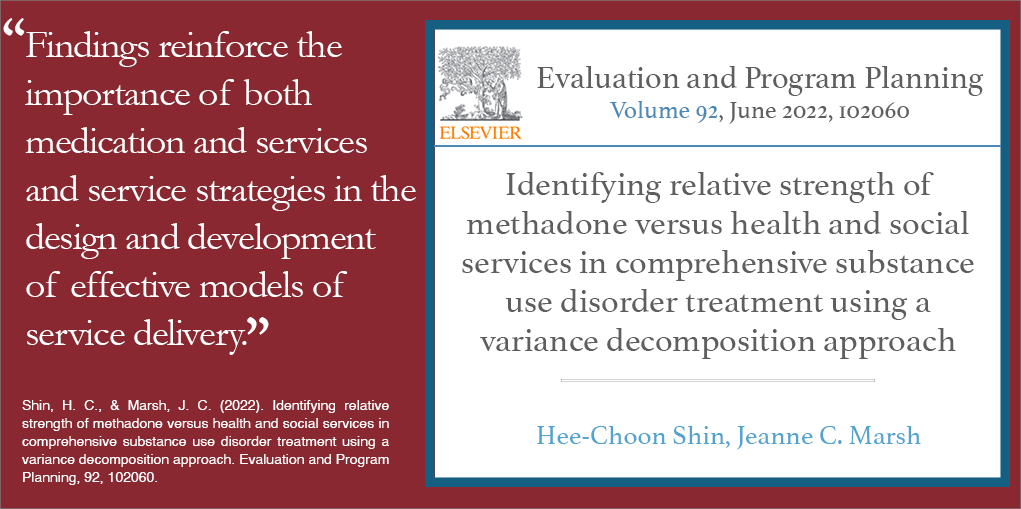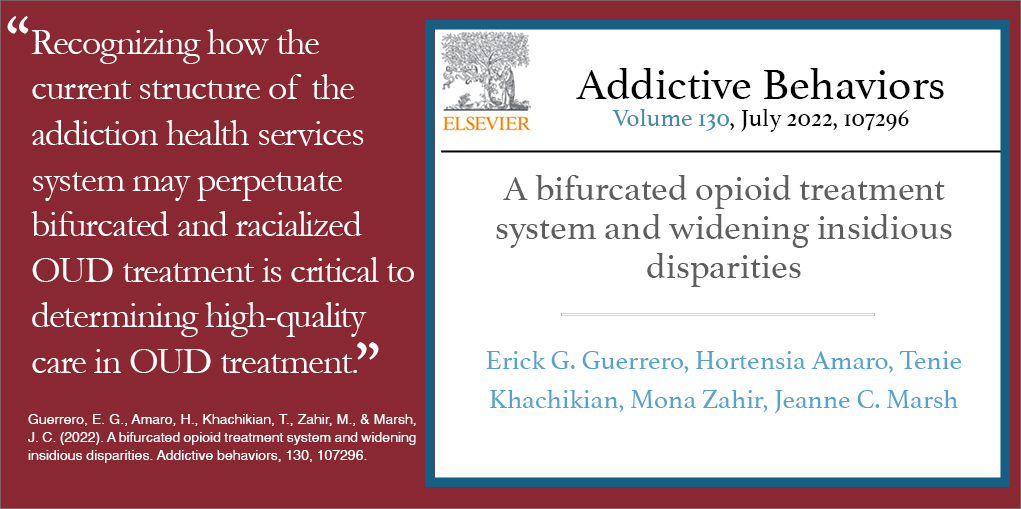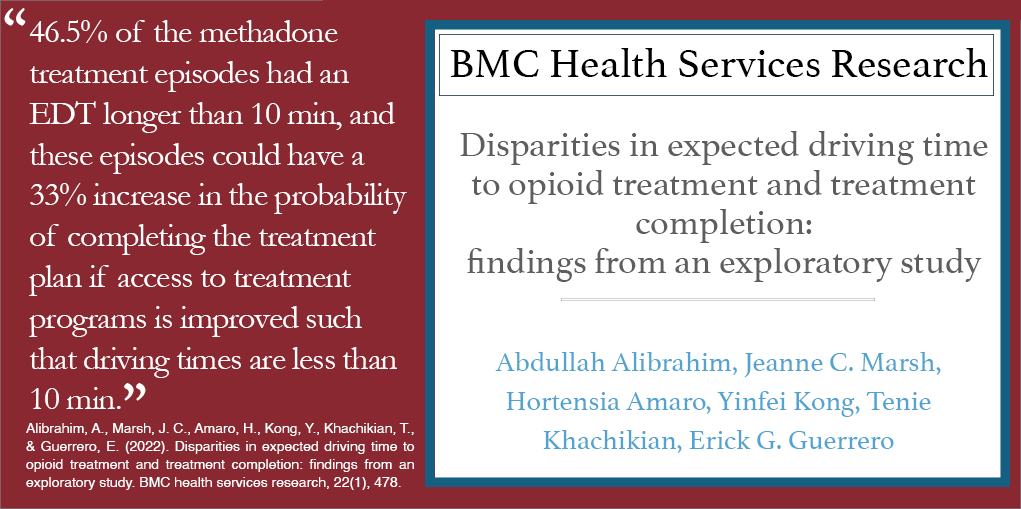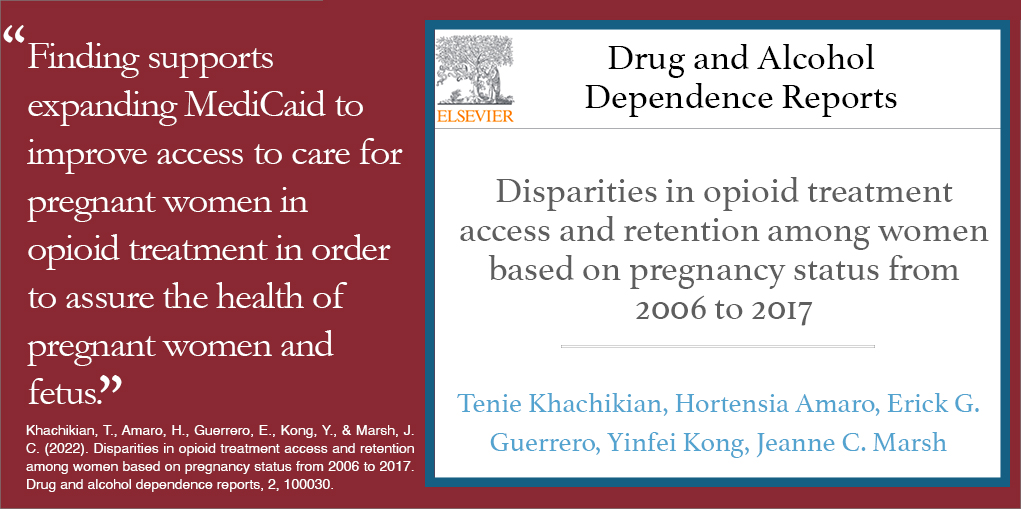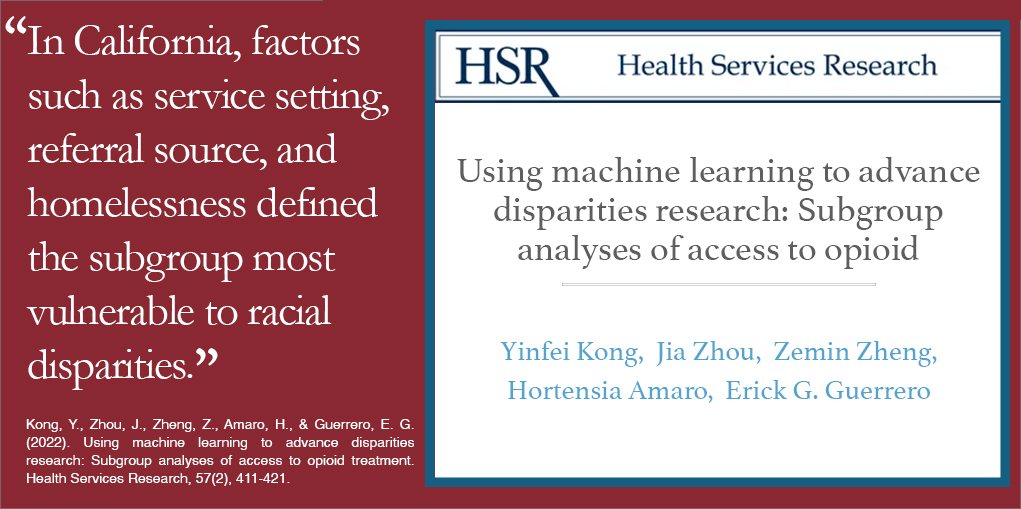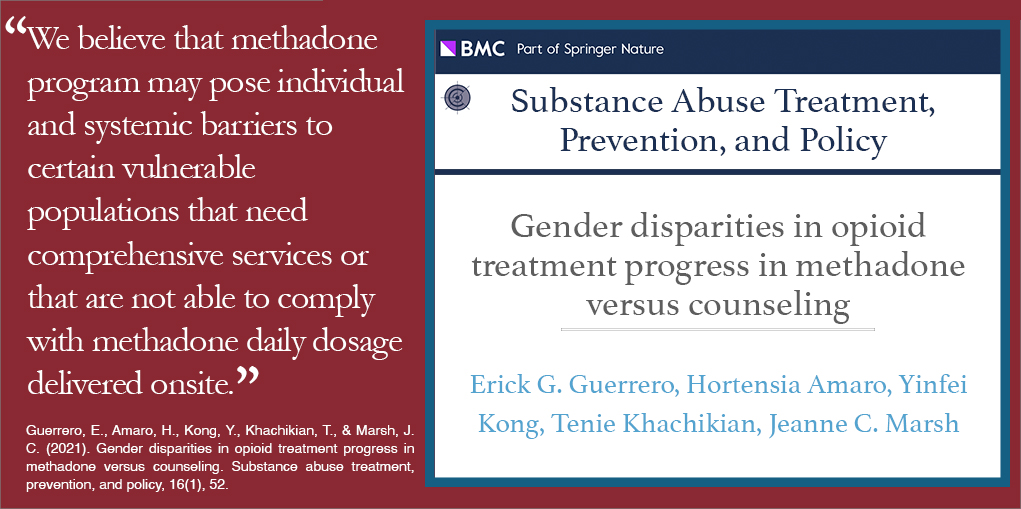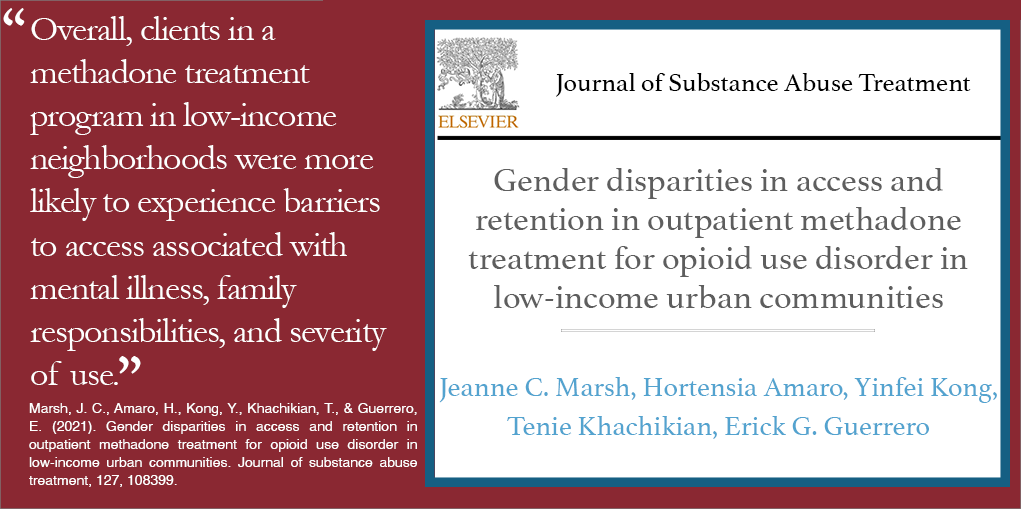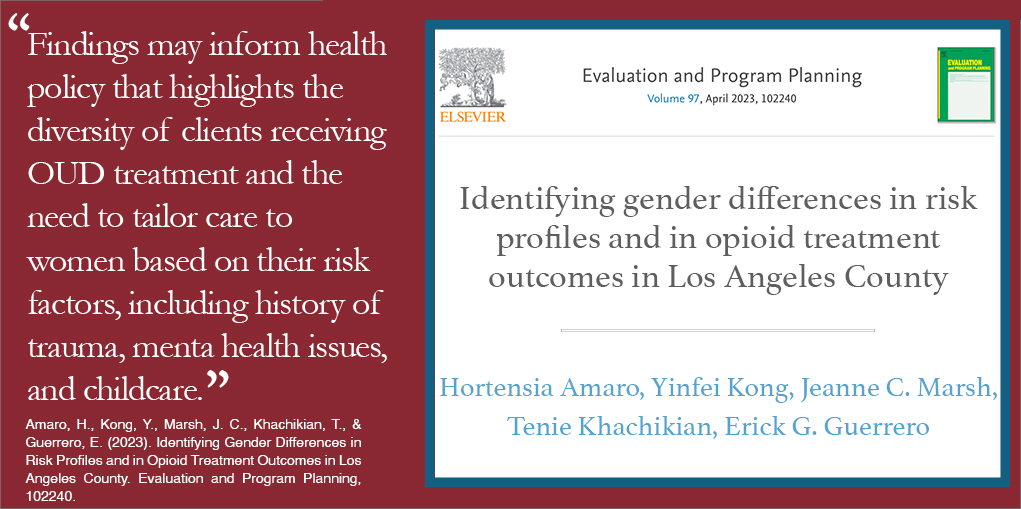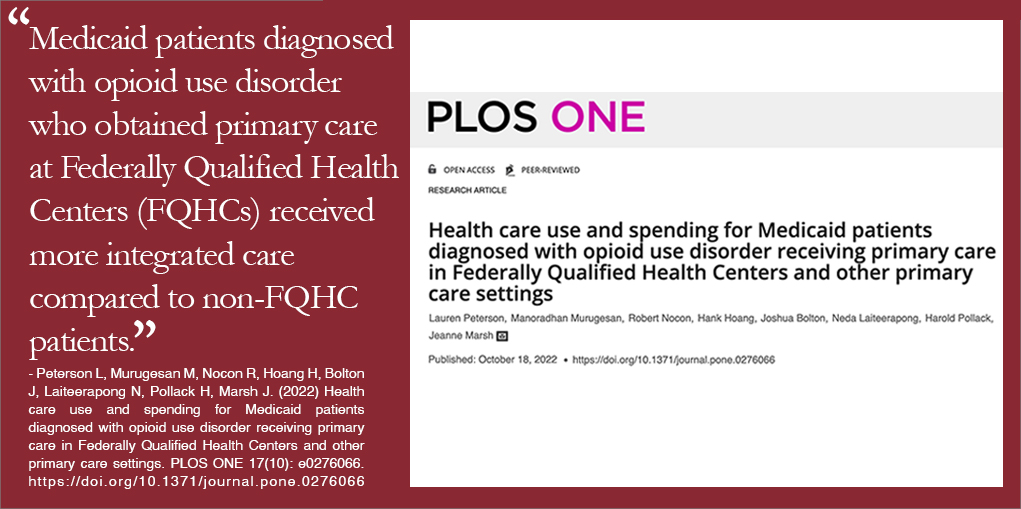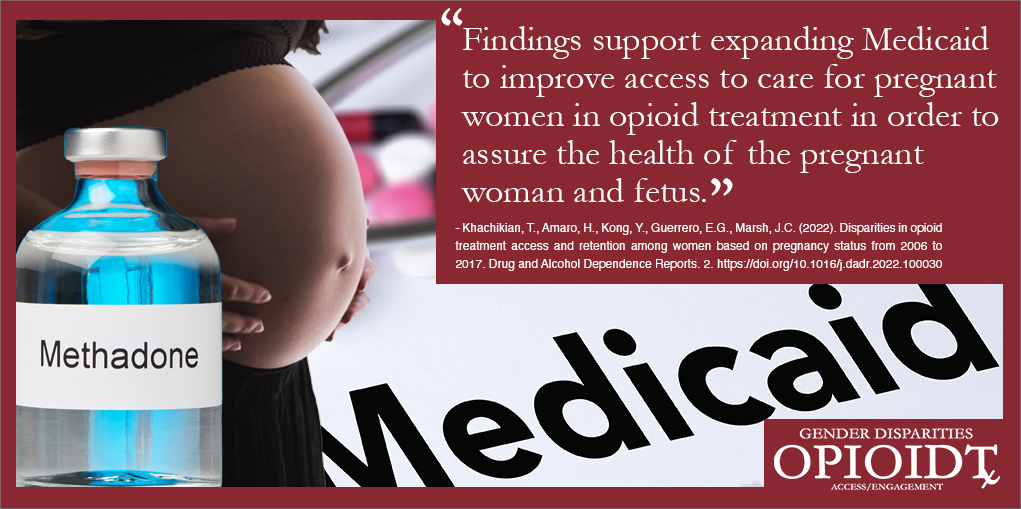Improving Substance Use Disorder Treatment Outcomes with Increased Medicaid Acceptance
The growth and acceptance of Medicaid has been pivotal in decreasing health disparities and increasing client access to and engagement in substance abuse treatment within the United States. Because more than 16 million newly insured persons now have access to Medicaid, this statistic has more far-reaching implications for health care policy and the revision of the Affordable Care Act (ACA). To date, disparities research has largely focused on differences between African-Americans and Whites while little focus has been given to substance abuse disorder (SUD) treatment outcomes and disparities between Latinos and non-Latino Whites.
In a study published in Substance Abuse Treatment, Prevention, and Policy by University of Southern California (USC) Associate Professor Dr. Erick Guerrero and Dr. Yinfei Kong (both members of USC’s Integrated Substance Abuse Treatment to Eliminate Disparities team), it explored the aforementioned disparities and their relationship to Medicaid access along with their research team. The team relied on the National Academy of Medicine definition of disparities – all racial/ethnic differences except those related to appropriateness, clinical need and patient preferences.
By asking the following questions, the research team sought to determine existing disparities between Mexican-Americans and non-Latino Whites in regard to successful SUD treatment completion (i.e. clinician report on clients’ drug- and alcohol-free status 30 days prior to discharge, client report of sobriety at discharge and clinician decision to discharge client because treatment goals were met for that treatment episode): (1) Is there a disparity? (2) What are the drivers of the disparity? (3) Is Medicaid payment acceptance associated with reduction of the disparity?
The exploration of these factors is important because Mexican-Americans are the most underserved ethnic minority group in the nation as well as the leading uninsured population within the United States. Findings from the research team’s study can potentially aid in decreasing the disparity gap related to treatment completion and inform health care policy regarding Medicaid and SUD treatment.
The team utilized data from the Los Angeles County SUD treatment outcome system, which included “122 publicly funded treatment programs in 2010 and 112 programs in 2013.” Researchers followed a “three-phased disparities research framework, which includes a detection phase, understanding phase, and reduction phase.” The detection phase was used to identify vulnerable populations, define health disparities and develop measures for the study of both. Identifying factors in health gaps and health care for vulnerable and less vulnerable groups was the purpose of the understanding phase, and implementing, developing and evaluating interventions that decreased/eliminated health and health care disparities took place in the reduction phase.
Analysis of data from 15,412 Mexican-Americans and non-Latino Whites from 2011 and 2013 showed the following key findings:
- A 1.1 percent disparity was identified in successful SUD treatment completion between non-Latino Whites and Mexican-Americans.
- Programs’ acceptance of Medicaid payments and clients’ primary drug of choice were both key drivers of differences between non-Latino Whites and Mexican-Americans and successful treatment completion.
- “Improvements in treatment completion for those treated in programs accepting Medicaid payment were greater for Mexican Americans than non-Latino Whites.”
This last finding is particularly critical because it suggests that the programs studied were particularly successful in helping Mexican-Americans achieve successful treatment from 2011–2013 when Medicaid was expanded in California. These findings are also important because they: build on developing information examining pre-Medicaid expansion and its impact on treatment outcomes; advance Mexican-American disparities research (which has had a major void regarding public health knowledge) and the findings further highlight the importance of adjusting for clinical characteristics when assessing how well a treatment system is assisting minority individuals in care.
According to the study, a lack of funding and access to technical support has proved to be a significant barrier for improving SUD program treatment. This is especially true for small, outpatient community-based providers that heavily rely on funding and regulatory resources (financial/nonfinancial), which constitutes more than 70 percent of the SUD treatment system.
When these programs accept and increase the number of clients with Medicaid, the program strategically improves its revenue by accepting these payments, but programs simultaneously take on more pressure to show accountability for improved client outcomes. Medicaid acceptance could decrease outcome disparities, considering the most promising programs emphasize the importance of Medicaid and its role in health services retention, and increase access to addiction treatment and financial support to continue and successfully complete treatment (particularly among low-income Latino clients).
Overall, these findings: (1) Show that the acceptance of Medicaid payments has the potential to significantly decrease important health disparities and improve treatment outcomes for vulnerable groups (2) Assist SUD treatment program providers in obtaining essential financial resources to provide improved care to clients (3) Promote health equity statewide, particularly in populations with a greater likelihood of treatment dropout (4) Inform local and national health care policy debate regarding the ACA and universal health care.
To view the study in its entirety, please click here.
Source: “Identifying and reducing disparities in successful addiction treatment completion: testing the role of Medicaid payment acceptance”, Substance Abuse Treatment, Prevention, and Policy




